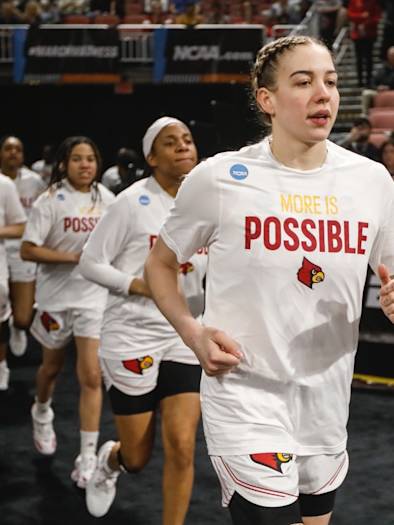
Lessons from “The Last Dance”
This article was originally published by SportBusiness.com.
More than 15 years after he retired for the third and final time, Michael Jordan is still unbeatable.
The Last Dance, the 10-part documentary series (aired on ESPN in the US and Netflix in the rest of the world) following Jordan and the 1990s Chicago Bulls has become a global phenomenon.
At a time devoid of live sports, it has dominated conversation in the States and driven huge ratings. It is already ESPN’s most-watched documentary ever. It has even crossed over to the UK, where basketball is not close to being one of the biggest sports, but where the documentary has been among the top shows on Netflix since its release.
Having made the canny decision to move up the release date of the documentary due to Covid-19 lockdowns across the world, the show has made that rare transition, moving from a hit on its own platform to a genuine cultural moment.
That is despite the fact that the success of the documentary seems to go against some commonly held beliefs about what works in today’s culture. The belief that limited attention spans mean that short-form content wins. The belief that our culture is now so diverse and spread out that single shows dominating the conversation is not possible. And that even when planning content, “binge” is king. This streaming sensation breaks all the rules.
So, what is the secret behind this viral sporting sensation? What is there to learn, from MJs final domination?
Story over format
The first step to any great documentary is also the most obvious. Find the right story.
The story of Michael Jordan and the Bulls certainly fits the bill. Jordan wasn’t just the best basketball player in the NBA during the ’90s, he was one of the world’s most recognisable faces. On the court, his dominance put him in a unique class that includes the likes of Mohammed Ali, Tiger Woods, and Serena Williams. Off it, he had a superstar status more similar to The Beatles or Michael Jackson.
As well as following a global megastar for over a decade, the documentary expertly weaves in stories about Dennis Rodman (a wildcard teammate who left the Bulls for a 48-hour bender in Vegas with Carmen Elektra), Phil Jackson (the ‘Zen-Master’ coach who changed the way the sport was played), Jerry Krause (the GM who inexplicably tore the Bulls apart having won six titles in eight years) and many more. It features Jordan’s gambling problems, the murder of his father, the “Dream Team” 92 Olympics team, filming of the movie Space Jam, and several incredible encounters Jordan had with fellow NBA stars. The story that The Last Dance had to tell was truly incredible.
You might think then that with this story, The Last Dance was always going to be a success. But I don’t think so. The Last Dance succeeded because of how it treated the story.
In an age of short-form and short attention spans, ten hour-long episodes feel like something from a bygone era. But every single second of the documentary deserved its place in the final edit. Rather than being tied to cutting down to one 90-minute edit for cinematic or DVD release, ESPN and Netflix gave the story the room to breathe it deserved. Did people lose focus or interest? Not a chance. When you have the story, we should never be afraid of long-form. Sometimes the story doesn’t just deserve it, it demands it.
The when and the where are just as important
The Last Dance became a cultural event amongst basketball fans and non-fans alike. It did what TV shows used to do in an era before Netflix, dominated attention and had the entire media talking about it. It brought us together, the way TV used to when we only had a handful of channels.
This return to a collective viewing experience is notable, and it underlines one of the crucial reasons for the success of The Last Dance. The product is important, but so is the publishing.
Pretty early in the lockdowns caused by Covid-19, ESPN, and Netflix made the decision to move up the publishing of The Last Dance. It meant that with no live sport on, The Last Dance essentially became a sporting event, and received the coverage that is normally reserved for such unmissable moments.
All the journalists and influential voices that would usually have been talking about the week’s results and storylines were covering a documentary in real time. And of course, millions of consumers were stuck at home, in the perfect environment to consume a 10-part documentary series.
Just as interesting was the way the show was rolled out. Because the show was broadcast on ESPN as well as Netflix, it was released not in one go to be binge-watched (like other shows such as Tiger King), but two episodes at a time, weekly.
This approach now seems old fashioned, but it has a distinct advantage. It allows for an ongoing conversation about the content. It means that instead of everyone watching the show within a few days and the conversation lasting maybe a week afterwards, we got five solid weeks of coverage about the documentary, increasing interest and driving eyeballs to the product.
This throwback strategy was perfect for the void of sport we are currently experiencing. The success of The Last Dance was without doubt as much to do with the when and the how, as it was the what. The publishing was as important as the content. Something just as true for every piece of content created for brands and publishers alike.
Music still matters
It is no exaggeration to say that The Last Dance has the best soundtrack of any sports documentary ever.
A blistering mix of drama, energy and nostalgia, this ’90s hip-hop inspired soundtrack feels as much a character in the documentary as any of Jordan’s teammates. One of the features of The Last Dance is its incredible pace, blistering backwards and forwards through twenty years of NBA history. It is the soundtrack that provides the energy to sustain this incredible pacing. The documentary simply wouldn’t be the same without it.
Social media convention has told us for several years that we should operate in a ‘sound-free’ world. That users flicking through content on phones means that we should assume what we create works without sound.
But sound, and specifically a soundtrack like the one in The Last Dance, transforms any film, in any setting. It tells us what to feel. It keeps us hooked. It takes us on the journey. Sound still really matters.
Access, Access, Access
The Last Dance tells the story of Jordan’s entire Bulls career, but it is centered on the 1998 season, Jordan’s final one in Chicago.
During that season, a documentary crew was allowed incredible access to Jordan and the team. The footage they shot has been in the can for two decades, waiting until Jordan and its protagonists agreed that the time was right to turn it into a documentary. The footage had taken on a mythology of its own, with only a select few who have seen it knowing the gold it contained. ESPN and Jordan waited so long because they knew just how incredible the footage was, and now we know, they were right to do it.
It is this original footage that is at the heart of The Last Dance. The new interviews are great, as is the footage of all the previous Bulls seasons. But in some form, they’ve been seen before. The footage from 98 is as unique and as unfiltered as it comes, and it is truly incredible. Inside the locker room, on the team plane, inside Jordan’s hotel room, it really is all-access.
With the success of sporting documentaries over the last few years, many publishers and brands alike have looked to recreate it and create their own versions of The Last Dance, All or Nothing, or Last Chance U. I myself have been part of creating some great examples for brands. But the most common mistake amongst lesser examples is trying to make lemonade with half a slice of lemon. Fifteen minutes at the end of an existing shoot is not the access required to create a documentary. Great documentary content needs time. Time to fully integrate with and get under the skin of a subject. To gain their trust and understand their story. For creating great documentary style content like this, time really is everything.
Rules are made to be broken, find someone capable of breaking them
In other hands, The Last Dance could have been a total disaster.
For all the rules it follows, it breaks five more. It covers decades of sporting history and countless sub-plots in a sprawling ten-episode series. It jumps back and forth between years and decades in a manner that could have been impossible to follow. It is a phenomenal documentary, that when imitated by lesser creators, could lead to many terrible ones.
Director Jason Hehir took on mythically-valuable footage, worked hand-in-hand with a sporting icon with impossible standards and took on ginormous audience expectations, and still he managed to create a beautiful piece of art that is almost universally loved. It is an astonishing achievement.
Great creators are great creators not because they follow all the rules, but because they know which ones they can afford to break. Michael Jordan dominated the NBA not because he perfectly followed the mold of an NBA superstar, but because he knew how to go beyond it. Others were athletic and talented. But Jordan knew how to push that little bit too far. How to be that bit too competitive. How to be that bit too demanding to his teammates. How to be that bit too much committed. The true “Jordan Rules” were the ones he was willing to ignore to be the greatest of all time.
In creating The Last Dance, Jason Hehir didn’t just perfectly capture his subject Michael Jordan, he lived up to him. The legacy of The Last Dance, as a piece of art that dominated lock-down, deserves its rightful place as a creative achievement alongside Jordan’s sporting ones.



